Showing 313–324 of 385 results
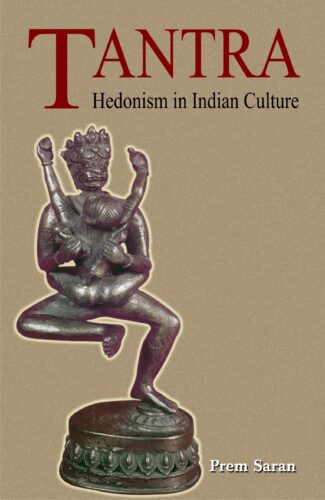
This is a cultural-anthropological study exploring those hedonistic aspects of the pan-Indian heritage which affirm that the pleasurable, especially the sexually pleasurable, is natural as a means to achieve the highest mystical experience.
This is a brilliant cultural-anthropological study exploring those hedonistic aspects of the pan-Indian heritage which, represented by centuries of the non-Vedic, Tantric tradition, affirm that the pleasurable, especially the sexually pleasurable, is natural as a means to achieve the highest mystical experience. Himself a Tantric initiate, Prem Saran offers a compelling, sympathetic analysis of Tantrism, its place in the Bengali and Assamese cultures, and its pervasiveness in pan-Indian thought and ritual generally. Prem Saran’s is also a cultural critique of modern Indian values and life-ways. In addition, it is an exercise in methodology, employing certain anthropological tools and concepts like Cultural Debate, Cultural Criticism, Hindu Renaissance and Pizza-effect the last three having been developed by the late Professor Agehananda Bharati whom the author acknowledges as a constant source of encouragement during the last decade.
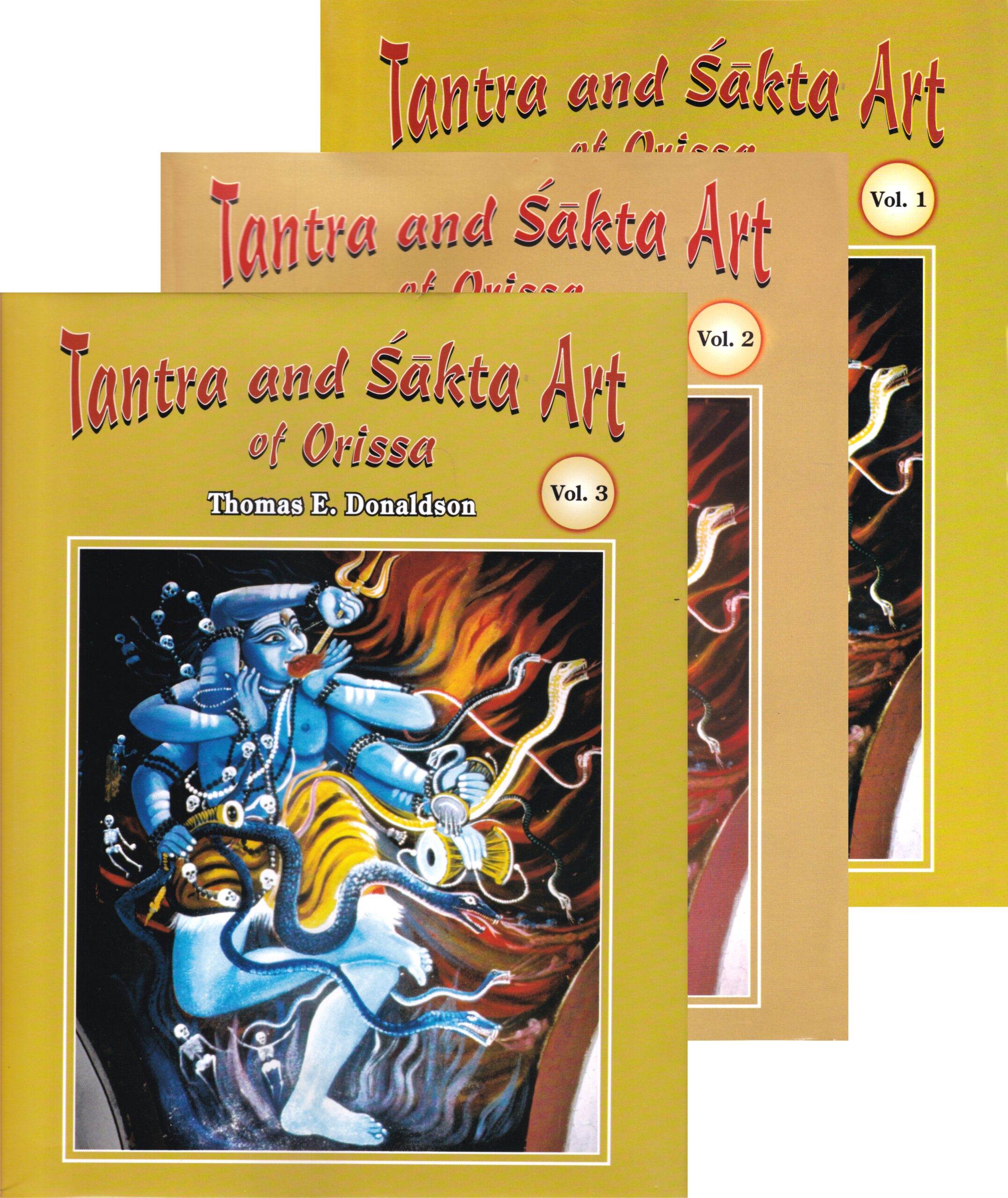
Here Prof. Donaldson presents a rich and variegated picture of the sakta/tantra art of Orissa, highlighting the evolving iconography of individual images. He focuses on different forms and depictions of the Goddess as Sakti, painstakingly analysing the architecture of a number of temples and their images.
The emergence of Tantrism and Shaktism in the sixth-seventh centuries in ancient India symbolised a belief in fertility worship, worship of the female principle with the Devi/Goddess supreme as the Energy/Power the substance of everything, pervading everything. In Orissa in particular, the shakta/tantra cults played a major role in the religion and culture of the region and this is testified by its many temples and sculptural wonders therein. In this work, Prof. Donaldson presents a rich and variegated picture of the shakta/tantra art of Orissa, highlighting the evolving iconography of individual images. Based on largely first-hand study of the temples and their iconography and also referring to various textual sources, he deals with, in detail, the shakta mythology of the region along with its depiction in iconography. He focuses on different forms and depictions of the Goddess the Matrikas, Camunda, Naga/Nagi, Manasha/Jaratkuriu, Tara, the Mahavidyas, the Yoginis and Dakinis and images of Purusha/Prakriti, Agni/Soma and Linga/Yoni, Painstakingly analysing the architecture of a number of temples and their images. The work abounds in photographs (more than seven hundred) revealing the variety of forms of the Goddess and their widespread distribution and provides many maps, diagrams and iconographical charts as well. A thorough research giving attention to minute details even while studying a wide range of iconographical traditions and forms, this work will prove an indispensable source book for young as well as established scholars.
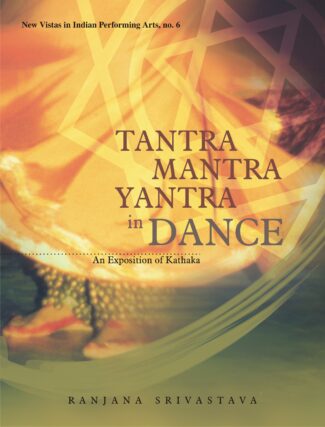
This book explores the roots of kathaka dance forms to reveal its sublime and divine dimension. It discusses the concept of Tantra and Sound and their manifestation in kathaka. It also analyses the distinct yantra formations both in the dance as well as the dance floor.
The Indian perspective has always been holistic and all-inclusive: thought and activity in different fields, at different levels, have been interlinked to produce what has been timeless. Indian arts is a classic example of such amalgamation: it interlinks aspects of art, philosophy, mythology, religion, and mysticism. This book is an attempt to unravel such links with specific reference to the Kathaka dance form. Dr. Ranjana Srivastava explores the roots of Kathaka dance form to reveal its sublime, philosophic, esoteric and divine dimensions. Focussing on inter-relationships, she unfolds how dance embraces other disciplines of Yoga Tantra, Mantra and Yantra. She discusses the concept of Tantra and its approximation and application to the dance form the way Kathaka absorbed the sacred knowledge within its form. She deals with the importance and aspects of sound in the Hindu religious scheme and its manifestation in Kathaka. Explaining the significance of the yantra as a diagrammatic/geometric representation and the way it functions, she analyses the techniques of Kathaka which create distinct yantra formations both in the physical movements of the dancer in the surrounding space as well as on the dancing floor. The study abounds in extensive notes to explain numerous terms and concepts and has references to noted works and authors on the subject. The book will be useful to experts and students of Indian art and, in particular, dance and will interest general people keen to know more about Indias art traditions.
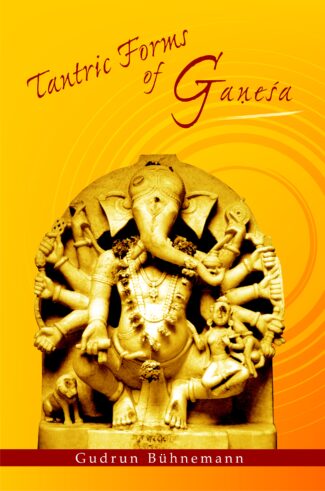
There may be many publications dealing with Ganesa, but only a few take original Sanskrit texts into consideration. Since the Tantric aspects of the deity have been studied too little, this book details fourteen forms of Ganesa as described in the Vidyarnavatantra.
Although the number of publications dealing with Ganesha is not insignificant, few take original Sanskrit texts into consideration. The Tantric aspects of the deity have certainly been studied too little. This book contributes to our knowledge of this less familiar side of Ganesha. It describes his forms according to the Vidyarnavatantra, a large compilation on mantrashastra attributed to Vidyaranya Yati and compiled around the seventeenth century. This text gives the iconographic peculiarities, mantras, and yantras of fourteen forms of Ganesha as well as instructions for the ritual application of the mantras.
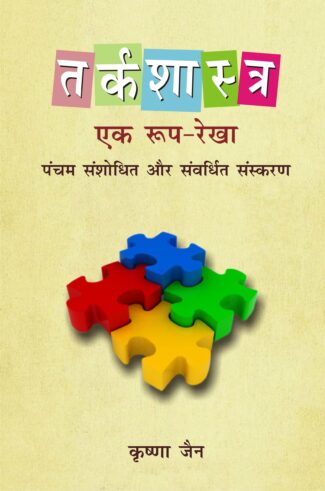
The present book is the fourth enlarged edition of the earlier book Tarkasastra Ek Roop Rekha. The current edition includes an additional chapter on Uses of Language and its Functions. Like the earlier book, the present book sets forth the principles and procedures of elementary Logic in the most simplified way and is specifically designed and intended for the use of undergraduate students. It contains almost all the main topics on Deductive, Inductive and Symbolic Logic prescribed in the syllabi of different universities in the country.
The present book is the fourth enlarged edition of the earlier book A Text Book of Logic-An Introduction. The current edition includes an additional chapter on Uses of Language and its Functions. Like the earlier book, the present book sets forth the principles and procedures of elementary Logic in the most simplified way and is specifically designed and intended for the use of undergraduate students. It contains almost all the main topics on Deductive, Inductive and Symbolic Logic prescribed in the syllabi of different universities in the country. The book attempts to present a clear perspective on Logic as a science of correct reasoning. In the introductory chapter the aim of Logic and the task of a Logician are elaborated. Other topics covered here are Terms, Propositions, Immediate Inference, Syllogism, Boolean Equations, Venn Diagrams, Anti-Logism Theorem, Truth Functions, Truth Table, Deductive Method, Predicate Calculus, Scientific Inductions, Causation, Mill’s Methods and Informal Fallacies to mention a few. All the topics are explained with the help of diagrams and lucid examples. Each chapter is followed by plenty of exercises for the benefit of students.

It is, for the first time, a complete Hindi translation of Bhatta Jairashis Tattvopaplavasimha by the two well-versed scholars of classical Indian Philosophy has been brought about. This translation, with a close hermenutical rendering of the text, provides a convincing structure of skeptical deconstruction of all the major systems of Indian Philosophical thought. Its study leads a reader toward a radical support of Charvaka Ideology by declaring the annihilation of all principles.
We come across variety of fragmented ideas related to the Philosophy of Charvaka in name of Bhutacaitanyavadi, Lokayatika, Akriyavadi and so on. But the Tattvopaplavasimha of Jairashi Bhatta is the only text available in Indian tradition which claims to rediscover the tradition of Brihaspati, supposed to be the founder of Charvaka Philosophy. It is, for the first time, a complete Hindi translation of the Tattvopaplavasimha is brought out by two well-versed scholars of classical Indian Philosophy. This translation, with a close hermeneutical rendering of the text, provides a convincing structure of dialectical as well as sceptical deconstruction of all the major systems of Indian Philosophical thoughts. Its study leads a reader towards a radical support of Charvaka ideology by declaring the annihilation of all principles.

This book records the contribution and sacrifice of sixty-seven great Indian women from various walks of life. These short biographical accounts capture in letter and spirit the strength and power of women in various fields like education, music, dance, literature, sports, service, religion and spirituality.
Tejasvini is an inspirational handbook that records the contribution and sacrifice of sixty-seven great Indian women from various walks of life. These short biographical accounts capture in letter and spirit the strength and power of women from eleventh century ce to our present times. This book surveys the role of women in various fields like education, music, dance, literature, sports, service, religion and spirituality that the history has witnessed time and again.
This book also records the supportive role of women during revolutionary periods. The sacrifice of women during renaissance movements and in freedom struggle especially during the Revolt of 1857 is a highly motivating remainder of their bravery and valour. The lives of these women, marked by discipline and strengthened by ethical codes, have made them immortal beings that will serve as the guiding spirit for generations to come. There is a place in this book highlighting the lives of many lesser or unknown warriors, scholars, artists, devotees and others.
This book is expected to inspire young minds, especially the women of modern India.
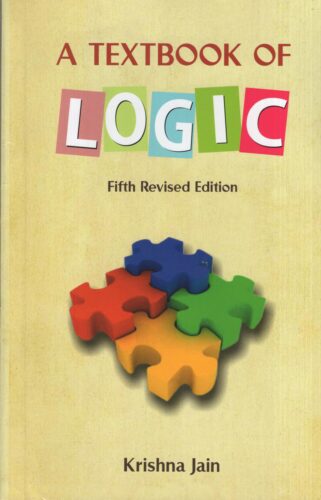
This book sets forth the principles and procedures of elementary Logic in a more simplified way. The enlarged edition of A Text Book of Logic Þ An Introduction, it includes an additional chapter on Uses of Language and its Functions besides the main topics on Deductive, Inductive and Symbolic Logic prescribed by various universities.
The present book is the fifth enlarged edition of the earlier book A Text Book of Logic An Introduction. The current edition includes additional chapters on Arguments and Explanations, and Dilemma. Like the earlier book, the present book sets forth the principles and procedures of elementary Logic in the most simplified way and is specifically designed and intended for the use of undergraduate students. It contains almost all the main topics on Deductive, Inductive and Symbolic Logic prescribed in the syllabi of different universities in the country.
The book attempts to present a clear perspective on Logic as a science of correct reasoning. In the introductory chapter the aim of Logic and the task of a Logician are elaborated. Other topics covered here are Terms, Propositions, Immediate Inference, Syllogism, Boolean Equations, Venn Diagrams, Anti-Logism Theorem, Truth Functions, Truth Table, Deductive Method, Predicate Calculus, Scientific Inductions, Causation, Mill’s Methods and Informal Fallacies to mention a few. All the topics are explained with the help of diagrams and lucid examples. Each chapter is followed by plenty of fresh and exclusive exercises for the benefit of students.

The book recounts 100 darsanas delving into the meaning of the Atmopadesa Satakam One Hundred Verses of Self-Instruction of Narayana Guru to present insights into the essence of Guru-disciple transmission. It combines the mystical element with scientific rigour to attempt a total transformation of consciousness in the reader.
With this verse you are entering into an intense spiritual discipline. Thus concludes the commentary of the first verse of Atmopadesha Shatakam, the One Hundred Verses of Self Instruction of Narayana Guru, the best known of his major works. Epitomizing the essence of Guru-disciple transmission, That Alone: The Core of Wisdom recounts 100 darsanas presenting the meaning of Atmopadesha Shatakam to a group of disciples. The power of the Hundred Verses is summed up by Guru Nitya: There is no need to learn each verse and then rationally apply it in everyday life. You can even hear it and forget it. Forgetting means it only goes deeper into you. Once you have heard it, it will go and work its way by itself. The effect will be very subtle. It comes almost without you knowing that it is somethings which you heard that is enabling you to see things in a new light or make resolutions in a certain more helpful way. Combining scientific rigor with mystical rapture, this book has the power to bring about a total transformation of consciousness by leading the reader to his or her own Core, wherein lies the essence of wisdom.

This book introduces Aryabhata and the Aryabhatiya to the new generations through an authentic English translation. It discusses Aryabhata as an innovator and the findings of Aryabhata on dashagitika, ganitapada, kalakriya and gola in great details, endorsing it as quite a genuine work.
The Aryabhatiya of Aryabhata is of great work in the annals of the history of Indian mathematics and astronomy. This volume is expected to give a complete translation (with notes) of the Aryabhatiya with references to some of the most important parallel passages. It is a brief descriptive work intended to supplement matters and processes which are generally known and agreed upon to give only the most distinctive features of Aryabhatas own system. Many common places and many simple processes are taken for granted.
The book vividly addresses topics such as dashagitika, ganitapada, kalakriya and gola in much details. Withstanding many a criticism from people like Brahmagupta on the theories of Aryabhata, this volume through the introductory chapter contends that the Aryabhatiya, on the whole, is quite genuine. It presents Aryabhata as an innovator, thus his difference from Smriti or tradition in his approach to many astronomical matters is fully justified. It also discusses a serious internal discrepancy in the Aryabhatiya about the stationary and revolutionary nature of earth.
This book helps in introducing Aryabhata and the quintessential of Aryabhatiya to the mathematicians and astronomers of the new generations, for whom the original language Sanskrit and the old processes might be unknown.
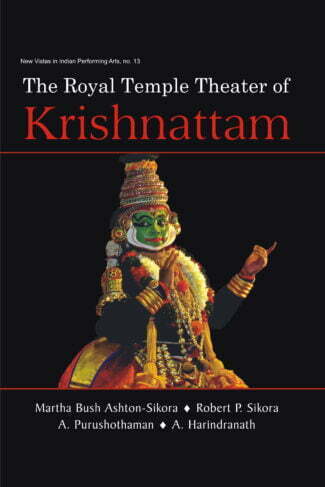
Krishnattam, a unique Sanskrit ritualistic dance-theater of Kerala, is one among India’s treasure trove of rare living artistic masterpieces. This history-travelogue, richly illustrated, takes one along to experience the Krishnattam plays, with their rituals and preparations, as the performers in fantastic, colorful costumes, dance, and mime the story of Lord Krishna’s life to the accompaniment of vocal and instrumental music.
Krishnattam, a unique Sanskrit ritualistic dance-theater of Kerala, is one among Indias treasure trove of rare living artistic masterpieces. In time past, Krishnattam, based on the Sanskrit poem Krishnagiti by the Zamorin King Manaveda, thrived in the royal environment of the Kingdom of Calicut, receiving the adoration of small devoted audiences. But, with Indias independence, the Zamorin lost his kingdom, and as his wealth dissipated, Krishnattam teetered on the edge of extinction. It was the Krishna-Vishnu Temple at Guruvayur that came to Krishnattam’s rescue and has become an integral part of the history of Krishnattam. Here, again, Krishnattam remained in seclusion until 1961, when the troupe performed in Bombay, exposing it to a larger Indian audience and foreign interest.
This history-travelogue takes one along in the dark of night to experience the Krishnattam plays, with their rituals and preparations, as the performers in fantastic, colorful costumes, dance, and mime the story of Lord Krishna’s life to the accompaniment of vocal and instrumental music.
This volume, richly illustrated, makes one meet some people, who have been the soul of Krishnattam. The actor-dancers share the quirks of fate, the severity of training schedule, and the rigor of exercises that transformed them from village children into performers. Currently, Krishnattam thrives at Guruvayur Temple, together with ample outside performances, as a devotional votive offering.
The first author takes one along on her twenty-year journey to discover the history and attractions of this art so rarely performed outside its locale in south India. Co-authors, Robert Sikora, A. Purushothaman and A. Harindranath greatly enhance this edition with their new researches, translations, and photographs.
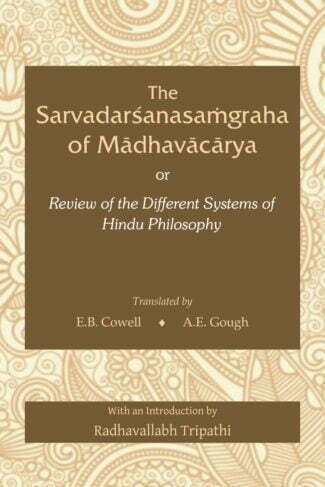
This book is an interesting specimen of Hindu critical ability. It presents the synopsis of sixteen philosophical systems that were current in the fourteenth-century south India in their most important tenets and maintains the principal arguments by which their followers were endeavoured to maintain them.
The Sarvadarshanasamgraha of Madhavacharya is an interesting specimen of Hindu critical ability. The author herein presents the synopsis of sixteen Charvaka, Bauddha, Jaina, Ramanuja, Purnaprajna, Pashupata, Shaiva, Pratyabhijna, Raseshvara, Vaisheshika, Nyaya, Jaiminiya, Paniniya, Samkhya, Patanjala and Advaita philosophical systems current in the fourteenth-century south India in their most important tenets and maintains the principal arguments by which their followers were endeavoured to maintain them. In course of his sketches of these systems, Madhavacharya frequently explains at length obscure details of these different systems.
Sarvadarshanasamgraha presents all these Darshanas from the Vedantic point of view. These had attracted to their study the noblest minds in India throughout the medieval period of its history. There were numerous sects of Bauddha, Jaina, and Hindu philosophical systems and we come across many of them in this book.
This present retypeset edition is quite reader-friendly as we have made a few changes to this edition as value-adds and by incorporating the present-day diacritics.
This English translation of Sarvadarshanasamgraha must evoke keen interest among scholars of philosophy, and researchers and students of philosophy across the globe.
| × |
|
Patnee -Wife 1 x ₹198.00 |
| × |
|
Amulets and Pendants in Ancient Maharashtra (3rd c. bc to 3rd c. ce) 1 x ₹198.00 |
| × |
|
Vedanta Sutras of Narayana Guru 1 x ₹360.00 |
| × |
|
Tarkasastra 1 x ₹252.00 |